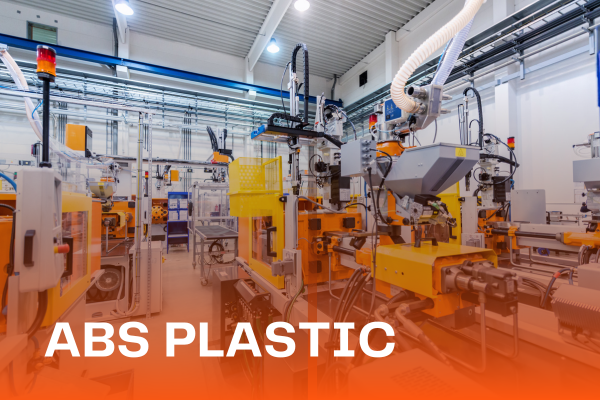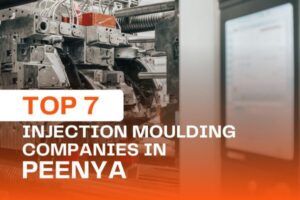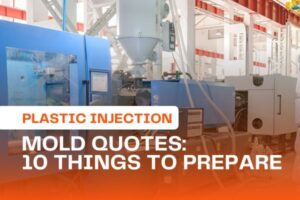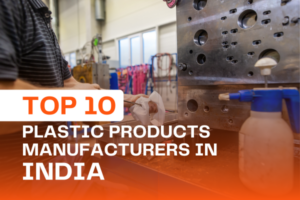
What is ABS Plastic?
Overview of ABS Composition
ABS (Acrylonitrile Butadiene Styrene) plastic is a thermoplastic polymer that offers robustness, glossiness, and strong resistance to physical impacts and chemical corrosion.
Monomer Contributions to ABS Properties
Its structure includes three monomers:
-
Acrylonitrile: Provides chemical and thermal stability
-
Butadiene: Enhances toughness and impact resistance
-
Styrene: Contributes rigidity and processability
Why ABS is Widely Used
This combination makes ABS ideal for many applications—especially injection molding—where these characteristics enable the production of durable, high-quality parts with excellent aesthetic appeal.
The ABS Plastic Injection Molding Process
Melting and Injection
Manufacturers melt ABS plastic pellets into a liquid and inject it under high pressure into a mold cavity shaped like the final product.
Cooling and Solidification
Once inside the mold, the molten ABS cools and solidifies, taking on the exact shape of the mold.
Efficiency and Volume
This process supports high-efficiency mass production of detailed parts with tight tolerances. Short cycle times allow for rapid manufacturing of large volumes.
ABS Plastic Pellets for Injection Molding
Role of Pellets in the Process
ABS plastic pellets serve as the primary raw material in injection molding. Manufacturers engineer them to meet specific requirements, such as:
-
Color
-
Strength
-
Flexibility
Impact of Pellet Quality
High-quality pellets ensure:
-
Consistent melting and flow
-
Reduced defects (e.g., warping, sink marks, voids)
-
Efficient and cost-effective production
Key Properties of ABS Plastic in Injection Molding
1. High Impact Resistance
Ideal for automotive parts, protective casings, and sports equipment due to its toughness.
2. Good Mechanical Properties
Combines strength and rigidity from acrylonitrile and styrene with the toughness of butadiene. Results in high tensile strength and stiffness.
3. Excellent Dimensional Stability
Maintains shape and size across temperatures and chemical exposure—critical for precision parts.
4. Thermal Resistance
Works in the range of -20°C to 80°C. High-heat grades are available for more demanding applications.
5. Ease of Processing
Easy to mold into intricate shapes. No pre-drying required, lowering costs.
6. Surface Finish and Aesthetics
Can achieve high-gloss finishes and be colored easily—great for consumer-facing parts.
7. Chemical Resistance
Withstands water, salts, acids, and alkalis. Less resistant to strong solvents.
8. Electrical Insulation
Performs well as an electrical insulator—commonly used for electronics housings.
9. Recyclability
Recyclable material supports sustainability and reduces waste.
10. Cost-Effectiveness
More affordable than many engineering plastics, offering a solid balance between cost and performance.
Advantages of Injection Molding ABS Plastic
-
High Production Efficiency: Supports large-scale manufacturing with low per-unit costs
-
Material Properties: Strength, durability, and thermal resistance make it versatile
-
Design Flexibility: Ideal for intricate, precision components
-
Superior Finish: Aesthetic surface quality often requires no post-processing
ABS Plastic Injection Molding Price Factors
-
Part Complexity: Intricate shapes increase mold cost
-
Production Volume: Higher volumes reduce cost per part
-
Material Properties: Specialized ABS grades may raise costs
-
Operational Factors: Labor, machine time, and tooling all affect final pricing
-
Design Efficiency: Optimizing part and mold design reduces waste and costs
Applications of Injection Molded ABS Plastic
ABS plastic is widely used in:
-
Automotive components (dashboards, bumpers)
-
Consumer electronics (cases, housings)
-
Toys (e.g., LEGO bricks)
-
Household appliances (panels, shells)
Its easy coloring and high-gloss finish also make it ideal for aesthetic-focused parts.




